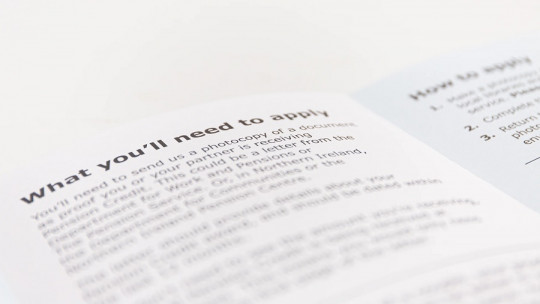We have all tried to convince someone of something on countless occasions. To a greater or lesser extent, it is something we do daily.
However, when we try to do it in a more formal way, we usually resort to the use of an argumentative text Let’s discover what this type of writing consists of and what its peculiarities are.
What is an argumentative text
It is a form of writing aimed at defending a position on a certain issue, using a series of arguments that support said thesis. The objective is to generate in the reader a change in their ideas or a reinforcement of them assuming that you previously agreed with the proposed position.
Every argumentative text must have a structure that has the following parts well defined.
1. Introduction
It is the part with which we begin the text, and it is of vital importance, since In these first lines the theme must be reflected with crystal clarity about which we are talking and above all what is the position on the matter that the writer is adopting and therefore the one that he will try to defend throughout the entire writing.
It is also very important for another aspect: with these initial sentences we have to capture the recipient’s attention and make our text interesting enough for them so that they want to continue reading it until finishing it. Therefore, the main objective, at the beginning, is to write something that is attractive to our potential reader.
There are different options to start our statement We can do it in a very academic way, explaining the concepts that we are going to cover. We can also use a narration of a specific case, seeking for the reader to identify with it, to then carry out inductive reasoning towards the general theory that we wish to present. Another possible way to begin the introduction is by using a famous quote from an authority figure on the subject that we are going to proceed to discuss.
2. Argumentation
Logically, it is difficult to convince someone of something if we do not give them good reasons for it (as long as what we want is to convince and not simply coerce or extort, of course). That is why the central development of the argumentative text, as its name already makes us think, It must consist of a whole battery of solid arguments that seamlessly support our position and that are also strong enough as if to make the reader embrace our reasoning.
At a structural level, it is the largest part of our writing, and therefore it is likely to contain several paragraphs, generally one to develop each of the arguments we want to use.
3. Conclusions
The closing of the text is a delicate part, since we must return to the main idea, this time relying on the arguments presented, to give one last push to our thesis and achieve the maximum possible persuasive effect on the recipient
The most important characteristics of the argumentative text
As in any writing we do, we can choose between a variety of styles, more or less formal, with one or another type of language, or showing greater or lesser closeness to the reader.
Depending on our objective, we can, for example, opt for a more aseptic style, always using impersonal verbal forms, or use a more subjective method, speaking in the first person and in the singular.
If the text is aimed at the general public, we must write our ideas in a more neutral way but if we have the advantage of having a target audience that we know to a greater or lesser extent, we can adapt our writing in a way that is especially interesting for these people.
As we have already seen, this type of writing allows us to use a variety of different styles when writing, but it is very important to keep in mind that once we have started writing using one of them, we have to keep it until we finish so that this distortion does not cause a negative effect when persuading the reader.
Arguments
They represent the core of an argumentative text, and are all those reasonings with which we intend to have an effect on the opinion of the person who reads us.
Its typology can be varied, as we will see below.
1. Causal
One of the most frequent and most powerful. It is about establishing a cause and effect relationship between two elements, in the most obvious way possible
Example: the ground is wet because it has rained.
2. Logical
Similar to the previous one, but trying in the most neutral way possible. It is the classic philosophical syllogism of, if p then q, and if q then r. If p is given, r must necessarily be given
Example: when it rains, the ground gets wet. The ground is wet, so it had to rain.
But beware, Some clever arguers can show us a logical sequence that apparently seems correct, but may not be so correct It is possible that they do this unconsciously (because they are wrong without knowing it) or that they do it deliberately. In this case we would be falling into the use of a fallacious argument or a fallacy.
Example: the ground is wet, so maybe it rained, or someone threw water, or the cleaning service came by, or they watered a nearby garden…
3. Analogy
With this type of argument what we try is to equate one situation with another, showing the similarities that exist between the two, so that if a reasoning is valid for the first it should also be for the second one.
Example: someone hired their telephone line with company X, had an incident and received very bad service, so if you hire the same company, you will necessarily suffer the same problem.
4. Generalization
Similar to the previous one, but presenting a series of cases and claiming that If a certain event occurs in all of these situations, it is reasonable to think that it also occurs in the conditions that we are exposing
Example: everyone I know who has seen it really liked this movie, so I’m sure I’ll love it too.
5. Of authority
Is about base the reason on the fact that a person (apparently an expert in the field of knowledge we are dealing with) leans in favor of the thesis we propose whether through articles, experiments, or other means, so we must be right.
Example: the WHO states that sugars are harmful to our health, so we must reduce the intake of foods that contain them in excess as much as possible.
6. Common sense
Sometimes we fall into a type of argument that is reduced to claiming that it is something known by everyone, that everyone knows it is like that, or that it has always been done in a certain way. They would rely on the apparent power of tradition. It can be clearly seen with the use of popular proverbs and sayings which supposedly capture the popular knowledge of past generations.
The problem is that this, in reality, is not guaranteeing us anything, and sometimes it is easy to dismantle them using more scientific arguments.
Example: in a certain town a traditional celebration has been taking place for many years, and since “it has always been like this”, no one really considers whether it is beneficial for everyone or whether someone is being harmed in some way by said act.
7. Appeal to the emotional
It may be that at a certain moment we are more interested in using the emotional state of the recipient than the objective reasons for our argument It’s something politicians do constantly, especially at election rallies.
Example: a politician appears outraged by the decision made by the leader of the opposing party, and shows his great dissatisfaction to his audience, but does not bother to rationally explain what negative effects that decision implies for him.
8. Ad hominem
Is a type of fallacy or fallacious argument in which we attribute a negative characteristic to the issuer without it being related to the thesis addressed , and we wrongly establish that he therefore cannot be right in his reasoning. We would be attacking the person instead of the argument.
Example: I dislike this person, so his work is surely wrong.
9. Prolepsis
But, if there is a really effective way to argue and convince, it is going one step ahead and studying in depth what are all the possible arguments against our thesis This strategy is known as prolepsis, and was already well studied and used by ancient Greek thinkers, especially by those who followed the currents of Stoicism or Epicureanism.
In this way, we can anticipate and list them first, with the corresponding counterargument for each of them to systematically refute them. In this way we will be able to close the recipient’s alternatives and give them a greater feeling that, indeed, our postulate has to be true.
In conclusion
After these lines we already know better everything related to argumentative texts, their variants, their parts and the possible arguments that we can use in them.
We hope to have been persuasive enough and to have convinced the reader that this type of text is the best option to get a person to modify their opinion in favor of the one we propose.









